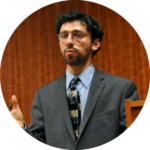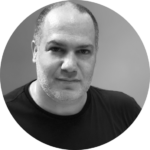Neidenburg

First Jewish presence: unknown; peak Jewish population: 141 in 1871; Jewish population in 1933: 125
The Jewish community of Neidenburg (Polish: Nidzica) developed in the second half of the 18th century. Neidenburg was the birthplace of Baruch Hirsch (Bethel Henry) Strausberg, the famous “Railroad King.” In 1933, 20 Jewish-owned businesses were forcibly shut down. By 1938, only 61 Jews lived in Niedenburg, 38 of whom required financial assistance from welfare organizations. The synagogue was abandoned by the end of October. On Pogrom Night, SA men burned down the synagogue building, killed two Jews (Julius Naftali and Minna Zack) and injured several others. In nearby Soldau (Polish: Dzaldowo), patients at a special home for invalids were euthanized. The Soldau synagogue survived Pogrom Night, after which it was used as a cinema. Ruins from the Neidenburg synagogue were later used in the construction of the Grenzland Museum. In May 1939, 23 Jews lived in the Neidenburg region. Several Jews who had moved to Berlin were deported from there. Most of Neidenburg’s German population fled after the Red Army arrived in the town in 1945; those who stayed were victims of terrible atrocities. After the remaining Germans were expelled, the town was renamed Nidzica (instead of Nibork, its traditional Polish name). At least 83 former Jewish residents of Neidenburg perished in the Shoah.Esther Sarah Evans
Copyright: Pogrom Night 1938 - A Memorial to the Destroyed Synagogues of Germany/ germansynagogues.bh.org.il
Notes
The Encyclopedia of Jewish Life Before and During the Holocaust, Shmuel Spector [Ed.], [publisher] Yad Vashem and the New York University Press, 2001., Lexikon der jüdischen Gemeinde in Deutschen Sprachraum, Klaus Dieter-Alicke, [publisher] Gütersloher Verlagshaus, 2008., Zeitungs-Artikel, Herbert Küsel, [publisher] Wallstein Verlag, 1973., www.vomhaff.de
Details
| Date Added | May 20, 2020 |
|---|---|
| Category | Residential |
| Country | PL |
| State | Warmia-Masuria |
| City | Nidzica (Neidenburg, Nibork) |
| Exhibits | Pogrom Night 1938 - A Memorial to the Destroyed Synagogues of Germany |
Have additional information, photos, connections, or other resources to contribute?
Help Us in the race against time to time document Jewish history!






